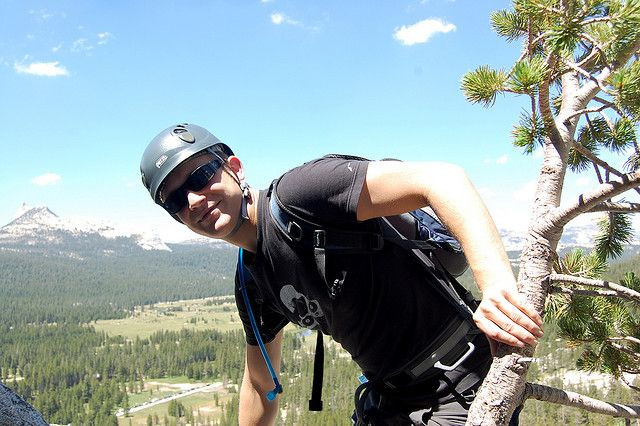Climbing A Tree Can Improve Your Working Memory Capacity By 50%

Working memory is the mental notepad on which you jot down the handful of items you are considering at a given moment. Research from the University of North Florida suggests there’s a simple way to enlarge the notepad. Climbing a tree or balancing on a beam can dramatically increase the capacity of your working memory, a new study demonstrated.
“This research has wide-ranging implications for everyone from kids to adults,” Dr. Ross Alloway, a research associate and lead author of the study, stated in a press release. “By taking a break to do activities that are unpredictable and require us to consciously adapt our movements, we can boost our working memory to perform better in the classroom and the boardroom.”
Exercise benefits us in many ways. Certainly, research has demonstrated its positive effects on cardiovascular health, and past studies including this one suggest even among those with a serious illness, exercise will boost the mood. Most recently exercise has become a go-to prescription for those wanting to ward off dementia. Could exercise — specifically, a very brief yet focused workout — also produce gains in working memory?
Natural Movement
This was the question posed by the UNF researchers, who began their investigation by recruiting volunteers between the ages of 18 and 59. After testing participants’ working memory, they next assigned the participants to a series of dynamic activities. Each of the actions required proprioception — a sense of the positions and actions of the limbs and their movements — and at least one other element, such as locomotion or route planning. Designed by MovNat, a natural movement fitness program, the activities included climbing trees, walking and crawling on a three-inch-wide beam, running barefoot, navigating over, under and around obstacles, and carrying awkwardly weighted objects.
The researchers also set up and tested the working memories of two separate control groups. The first group consisted of students simply learning new information in a lecture setting. The second group consisted of yoga class participants tasked with performing static proprioceptive activities. While yoga requires an awareness of body position, the postures are performed in a small space, which does not allow for dynamic navigation.
After two hours, the researchers re-tested the working memories of participants in all three groups. The two control groups showed no difference in test scores. However, the group whose participants performed dynamic proprioception activities showed a 50 percent increase in working memory capacity.
"It's exciting to see that proprioceptive activities can enhance [working memory] in such a short period of time," said Dr. Tracy Alloway, co-author and an associate professor at UNF. She and her co-author speculate proprioceptively dynamic training places a greater demand on (and so improves) working memory because as the terrain changes, you must recruit and use your working memory to adapt.
Alloway's research on working memory often arrives at startling (though somewhat intuitive) conclusions. In one study, for instance, she and her colleagues found people with high working memory are more optimistic and hopeful about the future compared to those with low working memory.
Source: Alloway RG, Alloway TP. The Working memory benefits of proprioceptively demanding training: a pilot study. Perceptual and Motor Skills. 2015.
Published by Medicaldaily.com



























